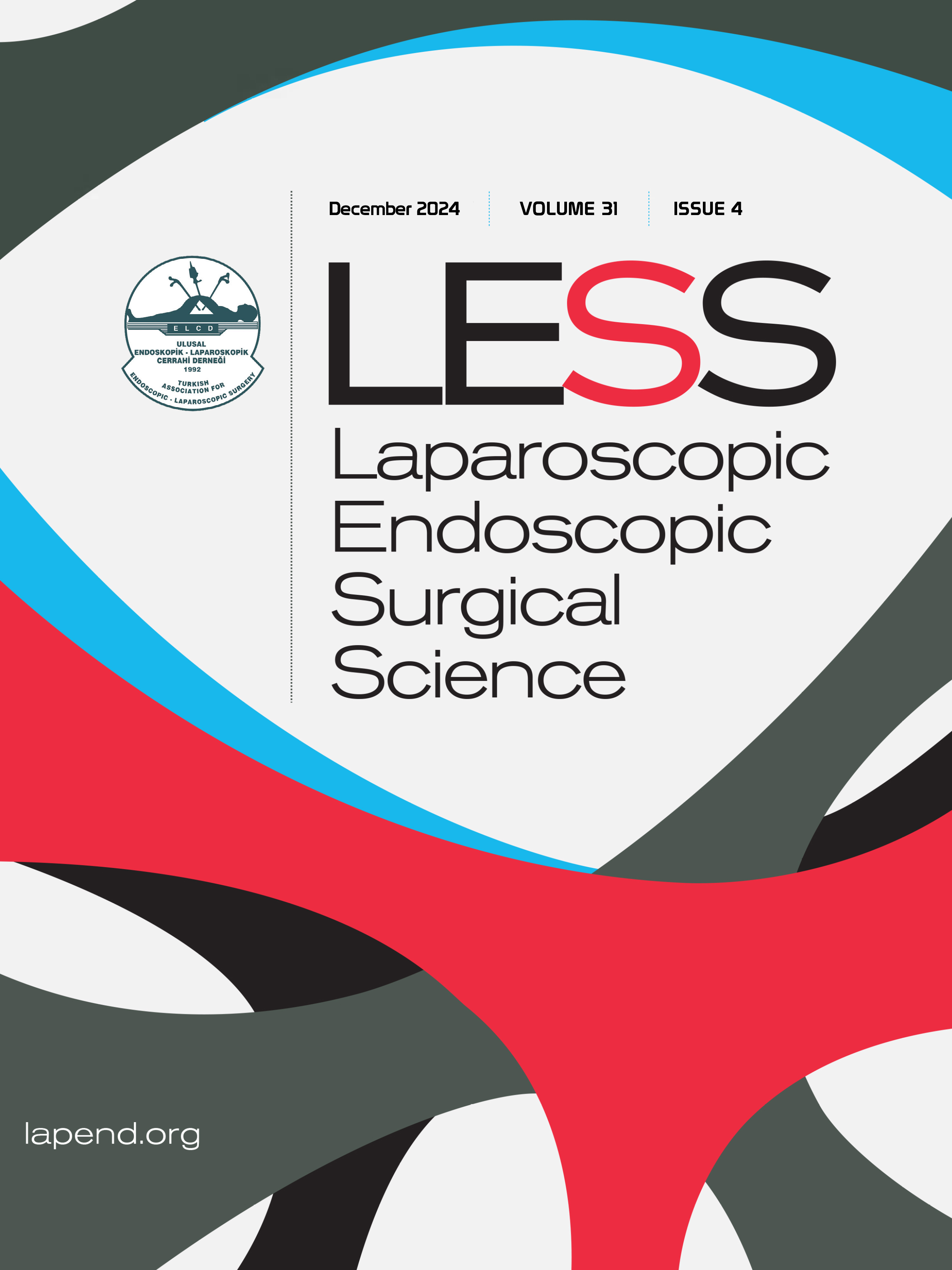Sedation anesthesia technique using carbon dioxide for the laparoscopic placement of a peritoneal dialysis catheter
Emin Zümrütdal1, Tuna Bilecik2, Sibel Ada3, Tevfik Tolga Şahin2, Fatma Ülkü Adam3, Nurten Genç3, Yeşim Yağbasan4, Ihsan Güney4, Murat Gündüz51Department of General Surgery, Private EPC Hospital, Adana, Turkey2Department of General Surgery, Health Sciences University Adana Training and Research Hospital, Adana, Turkey
3Department of Nephrology, Health Sciences University, Adana Training and Research Hospital, Adana, Turkey
4Department of Anesthesia and Reanimation, Health Science University Adana Training and Research Hospital, Adana, Turkey
5Department of Anesthesia and Reanimation, Çukurova University Faculty of Medicine, Adana, Turkey
INTRODUCTION: Chronic ambulatory peritoneal dialysis (CAPD) is a cost-effective treatment for patients with end-stage renal disease (ESRD), and several advantages to CAPD have been reported in comparison with hemodialysis. Several techniques have been described for placing the catheter in the abdominal cavity in CAPD. Use of a laparoscopically fixed CAPD catheter is popular, but this technique often requires general anesthesia (GA). Most ESRD patients with concomitant diseases, such as hypertension, diabetes mellitus, and coronary artery disease, are at high risk to undergo GA, which may preclude catheter insertion. Sedation plus local anesthesia (SA) may be an alternative in these patients. To the best of our knowledge, the use of SA with carbon dioxide (CO2) insufflation has not been previously reported with laparoscopic fixation of a CAPD catheter. In this study, the use of SA and GA were compared with CO2 insufflation in the laparoscopic fixation of a CAPD catheter in 18 patients.
METHODS: Between January 2016 and February 2017, 18 patients (GA: n=13; SA: n=5) underwent laparoscopic CAPD catheterization. All of the GA patients were intubated. Intraabdominal pressure was fixed at 14 mmHg. Patients who underwent SA were administered fentanyl in the operation room and midazolam in the preoperative patient room. Prilocaine hydrochloride and lidocaine hydrochloride were used to provide local anesthesia at all identified incision points. Intraabdominal pressure was fixed at 7 mmHg in all patients. There was no need to convert to GA in any patient. The patients were evaluated in terms of demographic data, perioperative parameters, and postoperative complications.
RESULTS: There were no statistically significant differences between the groups in terms of demographic, perioperative, or postoperative complications (p>0.05).
DISCUSSION AND CONCLUSION: We think that SA is a factor of tolerability in laparoscopic surgery and low pressure. SA may be preferred to GA in high-risk ESRD patients with systemic diseases for laparoscopic CAPD catheter placement.
Sedasyon anestezisi ile CO2 gazı kullanılarak uygulanan laparoskopik tespitli peritoneal kateter uygulama tekniği
Emin Zümrütdal1, Tuna Bilecik2, Sibel Ada3, Tevfik Tolga Şahin2, Fatma Ülkü Adam3, Nurten Genç3, Yeşim Yağbasan4, Ihsan Güney4, Murat Gündüz51EPC Hastanesi,genel Cerrahi Kliniği,adana,türkiye2Sağlık Bilimleri Üniversitesi Şehir Hastanesi,genel Cerrahi Kliniği,adana,türkiye
3Sağlık Bilimleri ÜniversitesiŞehir Hastanesi,nefroloji Kliniği,adana,türkiye
4Sağlık Bilimleri ÜniversitesiŞehir Hastanesi,anestezi Ve Reanimasyon Kliniği,adana,türkiye
5Çukurova Üniversitesi Tıp Fakültesi,anestezi Ve Reanimasyon Kliniği,adana, Türkiye
GİRİŞ ve AMAÇ: Sürekli ayaktan periton diyalizi(SAPD) son dönem böbrek yetmezliğinde(SDBY) etkin bir tedavi yöntemidir. SAPD için intraabdominal kaviteye farklı yöntemler ile kateter yerleştirme teknikleri tarif edilmiştir. Bu teknikler arasında laparospik yöntem birçok çalışmada öne çıkmaktadır. Laparoskopik gelişim ile birlikte şu an için en çok tercih edilen yöntem tespitli SAPD kateter uygulamasıdır.
Bununla birlikte laparoskopik SAPD kateter yerleştirilmesi genel anestezi gerektirir. SDBY hastalarının çoğu hipertansiyon diabetes mellitus, koroner arter hastalığı gibi hastalıklar ile birlikte bulunduğu için komorbiditesi yüksek klinik bir tablodur. Bu sebeple komorbiditesi olan bu populasyonda genel anestezi(GA) uygulanması yüksek risk taşır.
Araştırmalarımızda yapılan çalışmalarda sedasyon anestezisi(SA) eşliğinde laparoskopik tespitli SAPD kateteri takılması CO2 insuflasyonu ile birlikte bildirilmemiştir.
Bu çalışmada laparoskopik tespitli SAPD kateteri takılan SA eşliğinde 5 hasta ile GA eşliğinde 13 hasta geriye doğru incelenerek karşılaştırıldı.
SA uygulanan hastalarda GA uygulanan ameliyatlardan yöntem farklılığı dışında demografik, perioperatif ve postoperatif komplikasyonlar açısından istatistiksel olarak anlamlı farklılık tespit edilmedi.
SDBY hastalarında SAPD kateteri yerleştirilmesi ameliyatında SAnin, sistemik hastalıkları yüksek risk oluşturan KBY hastalarında GA yerine tercih edilebileceğini düşünmekteyiz.
YÖNTEM ve GEREÇLER:
BULGULAR:
TARTIŞMA ve SONUÇ:
Manuscript Language: English















